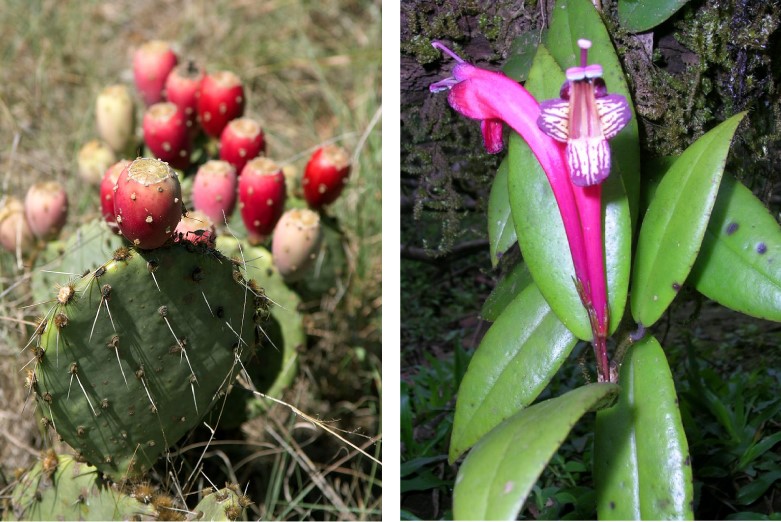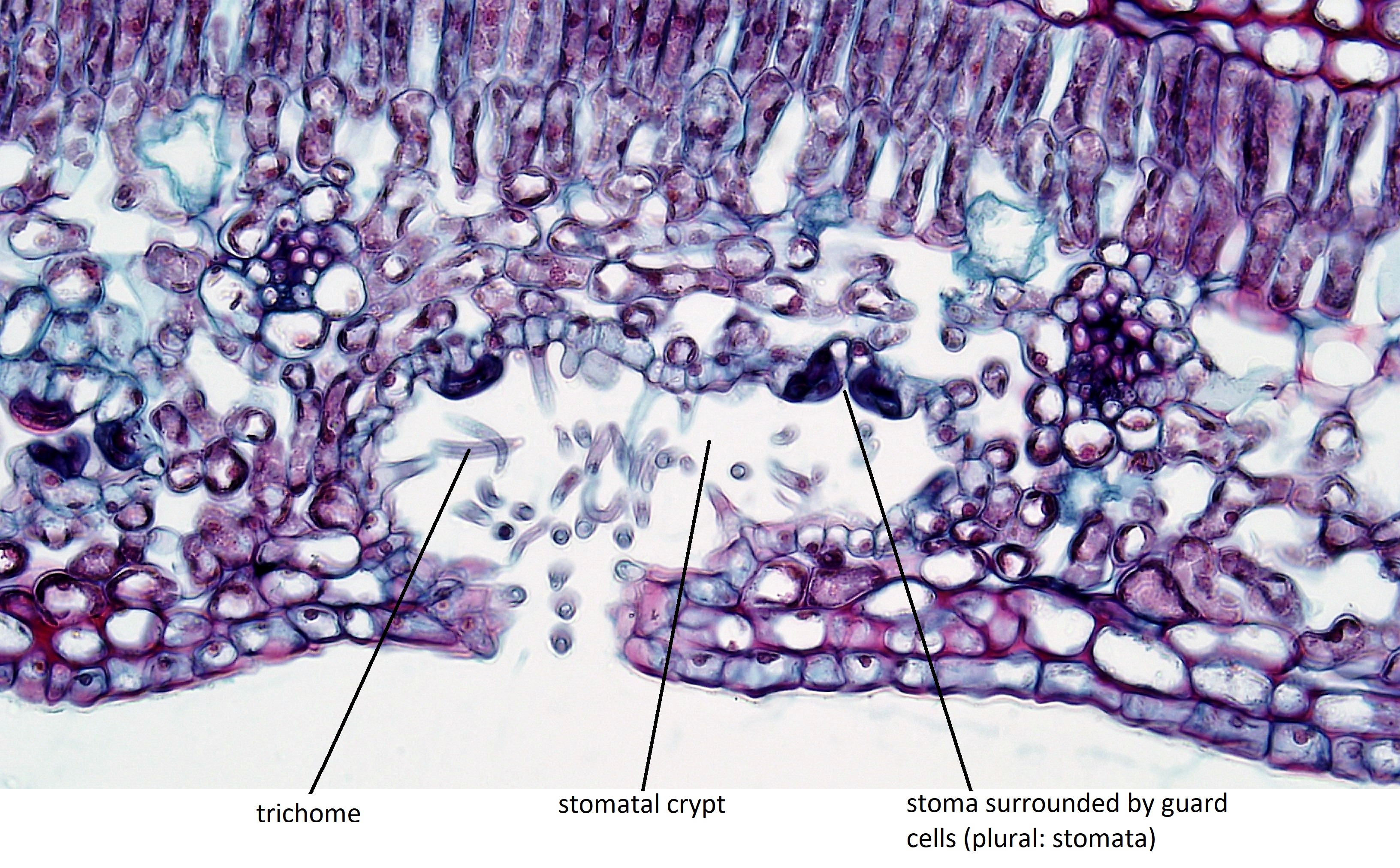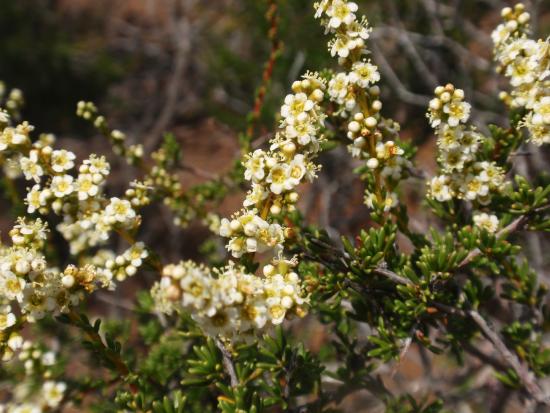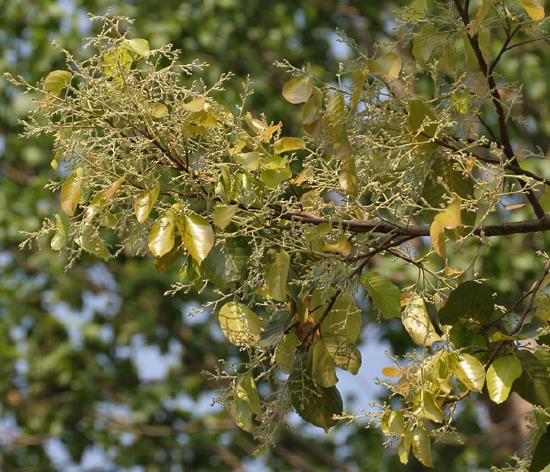4.5.1.2.1: Adaptations to Reduce Transpiration
- Page ID
- 32035
Learning Objective
Describe the various adaptations that help plants reduce transpiration rate.
Plants have evolved over time to adapt to their local environment and reduce transpiration. Leaves are covered by a waxy cuticle on the outer surface that prevents the loss of water. Plants that grow in dry environments and plants that grow on other plants (epiphytes) have a much thicker waxy cuticle than those growing in more moderate, well-watered environments (Figure \(\PageIndex{1}\)). Additionally, they often have a thick covering of trichomes or of stomata that are sunken below the leaf’s surface (Figure \(\PageIndex{2}\)). These adaptations impede air flow across the stomatal pore and reduce transpiration. Multiple epidermal layers are also commonly found in these types of plants .


The size and shape of photosynthetic structures also influences transpiration rate. Succulent plants, common in deserts, have thick, fleshy leaves or stems (Figure \(\PageIndex{1}\), left). Other plants, such as the evergreen shrubs of the chaparral, have small, thick, tough leaves (Figure \(\PageIndex{3}\)). Compared to thin, broad leaves, these shapes reduce surface area-to-volume ratio and decreases the opportunity for water loss. Plants with thin, broad leaves that live in climates with hot, dry seasons (such as chaparral or tropical forests that have a wet and dry season) may be deciduous, losing their leaves during these seasons to limit transpiration (Figure \(\PageIndex{4}\)).


As discussed in 13.7: Photorespiration and Photosynthetic Pathways, CAM plants close their stomata during the day when light and high temperatures would otherwise increase transpiration rate. C4 plants reduce the need to frequently open stomata by creating a high carbon dioxide concentration in the bundle sheath cells, which conduct the Calvin cycle. Regardless of photosynthetic pathway, plants can open and close stomata to regulate transpiration rate based on environmental conditions.
Attribution
- Curated and authored by Melissa Ha using 30.5 Transport of Water and Solutes in Plants from Biology 2e by OpenStax (licensed CC-BY). Access for free at openstax.org.


